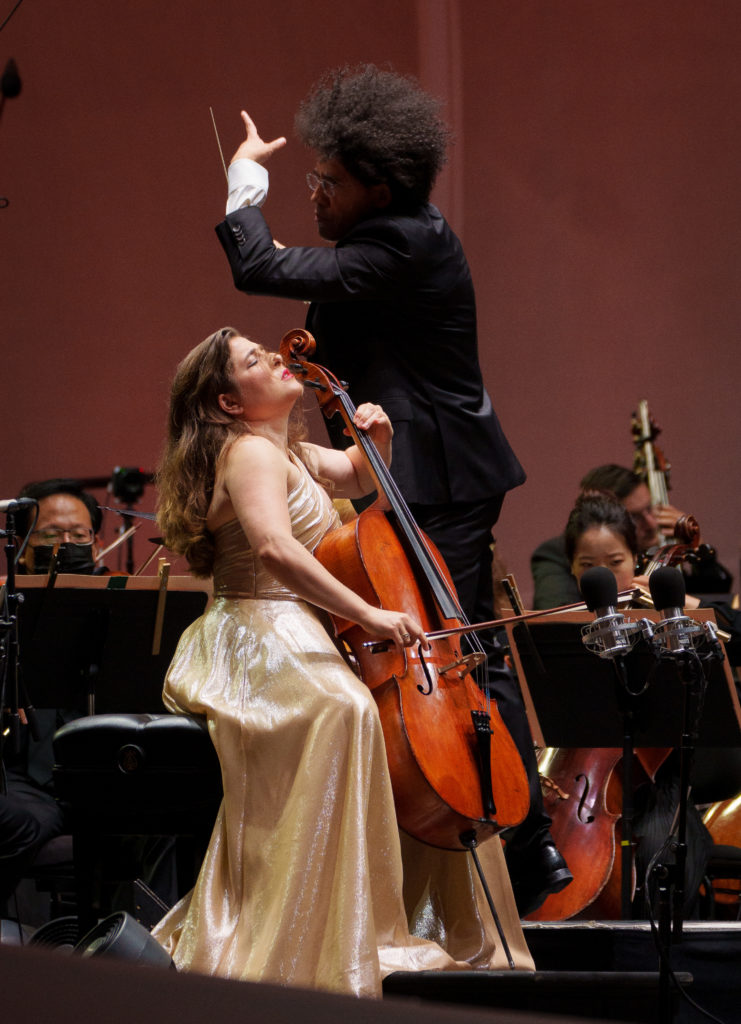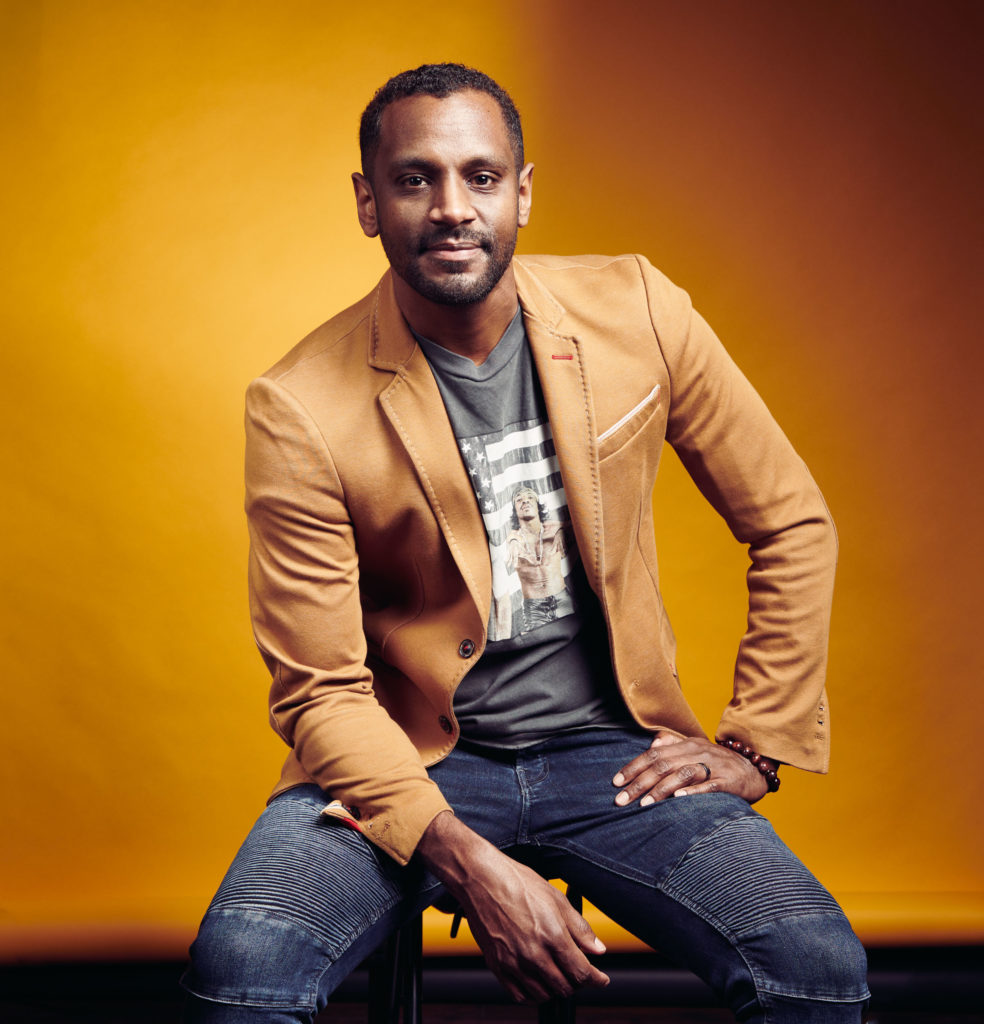San Diego Symphony’s Preview of Upcoming Carnegie Hall Concert Soars
In preparation for the San Diego Symphony’s return to Carnegie Hall on October 13, Music Director Rafael Payare and the orchestra played their complete New York City program on Saturday at the Rady Shell. From the Orchestra’s vibrant, polished response to Payare’s baton in the Shostakovich Fifth Symphony to Carlos Simon’s exciting, commissioned new work Wake Up: A Concerto for Orchestra and cellist Alisa Weilerstein’s impassioned account of the Dvořák Cello Concerto, I would say they are ready!
The purpose of a concerto for orchestra is to give every section in the orchestra its moment in the sun and to provide ample delectable solos for the first-chair players. Of course, every composer who chooses to write a concerto for orchestra risks comparison to Béla Bartók’s 1943 Concerto for Orchestra, the gold standard for the genre. Simon’s driving, muscular work takes this challenge seriously, and under Music Director Rafael Payare’s assertive command, it launched the concert with unmitigated panache.In Simon’s introductory words to the Rady Shell audience, he asked the audience to shout in unison his two-word title—Wake Up!—to demonstrate the sharply accented two-note motif that unifies his 20-minute concerto. Trumpets announce this motif upon the downbeat, answered by sharp echos from the percussion section, which is given an unusually prominent role throughout the work.
Because Simon’s concerto for orchestra was intended to open the San Diego Symphony’s newly renovated Copley Symphony Hall at the Jacobs Music Center in November, early on Simon requested a tour of the hall while the construction was in progress. He picked up some metal debris to be used in his piece by the percussion section, but more importantly he noted the 1929 building’s original function as a motion picture place, so he decided his musical style should evoke the lush harmonic idiom of Hollywood movie scores from the mid-20th Century. I would say that Simon has successfully squared the circle: he has constructed a clean, transparent orchestral texture that sounds distinctly contemporary while allowing lush cadences that shout “Hooray for Hollywood!”
Among the pleasures of this concerto we heard graceful, sonorous solos from Principal Flute Rose Lombardo; a wistful, cantabile theme from Concertmaster Jeff Thayer; an unexpectedly moving duet between Principal Clarinet Sheryl Rink and Principal Tuba Aaron McCalla; a Coplandesque fanfare from Principal Trumpet Christopher Smith, and jazzy riffs from the trombone section. The percussion section proved unusually engaged throughout, and I doubt that I will ever again have the opportunity to observe Principal Percussion Gregory Cohen striking—with his customary discipline—a large piece of metal construction debris with a hefty hardware store hammer.In February of 2021, Payare programmed another highly successful Simon work, Elegy: A Cry from the Grave, written for string orchestra. His confidence in Simon for this commission has been amply rewarded in Wake Up: A Concerto for Orchestra.
Antonin Dvořák’s Cello Concerto in B Minor is in a class of its own, and nearly every cellist of note has recorded this concerto. To this celebrated concerto Alisa Weilerstein brought both her considerable technical prowess and her passionate identification with its high Romantic idiom. Majestically supported by Payare and the orchestra, I cannot recall a more ravishing, emotionally satisfying performance of Dvořák.
In concerto’s “Allegro” movement, Weilerstein’s vigorous opening assertions boldly ascended to her calm, shimmering account of the composer’s lyrical main theme that dominates the movement and returns in the final “Allegro non troppo.” This confident progression provided a rewarding template for her journey through the concerto’s rich emotional landscape. I would be remiss if I did not salute Principal Horn Benjamin Jaber’s glowing solo at the beginning of the “Allegro” just before the solo cello enters.
In the work’s reflective “Adagio,” Weilerstein ’s discerning, probing interpretation was deftly accompanied by soft clarinet murmurings and complemented by a melting trio from the horns. Payare’s exuberant direction of the finale only heightened its drama, and Weilerstein’s bravura eloquence proved nothing less than transcendent.
No doubt it is mere coincidence that former Music Director Jahja Ling chose Sergei Prokofiev’s Fifth Symphony for the the San Diego Symphony’s visit to Carnegie Hall ten years ago and Rafael Payare chose Dmitri Shostakovich’s Fifth Symphony for the orchestra’s upcoming Carnegie Hall concert. Life was precarious for artists in the Soviet Union, and the regime’s doctrine of Socialist Realism placed significant limitations on what Soviet era composers were allowed to create, but the formidable catalogue of symphonies written by Shostakovich and Prokofiev towers over the meager symphonic legacy of 20th-century American composers.
Payare and the San Diego Symphony gave a powerful, compelling account of the Shostakovich Fifth Symphony, from its dark, mysterious opening movement to the exuberant scherzo, the elegiac “Largo” and the frenzied, martial finale. The clean, focused ensemble of the string sections have never sounded more persuasive, and the woodwind solos soared. It is a safe bet that the orchestra’s interpretation of the Shostakovich will receive a standing ovation in New York.
This concert was presented by the San Diego Symphony at The Rady Shell at Jacobs Park on Saturday, October 7, 2023.

Ken Herman, a classically trained pianist and organist, has covered music for the San Diego Union, the Los Angeles Times’ San Diego Edition, and for sandiego.com. He has won numerous awards, including first place for Live Performance and Opera Reviews in the 2017, the 2018, and the 2019 Excellence in Journalism Awards competition held by the San Diego Press Club. A Chicago native, he came to San Diego to pursue a graduate degree and stayed.Read more…


